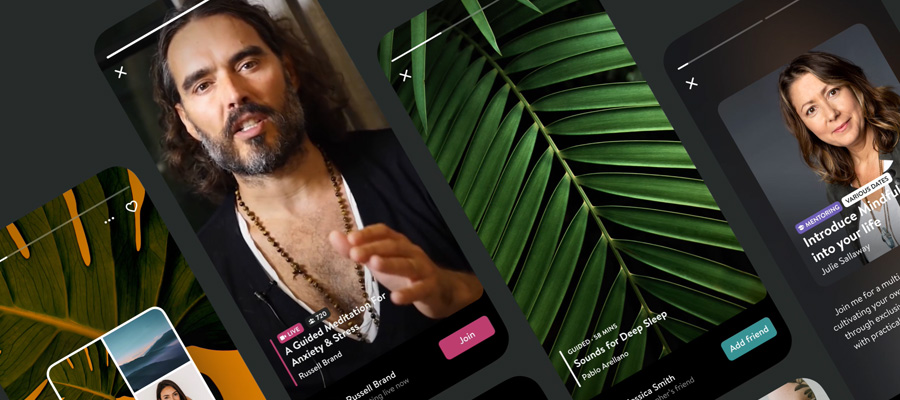Marketing, like other corporate functions, is evolving into a complex and rigorous part of a business. Today, there is a delicate balance between embracing technology and delivering a personalized experience where you allow customers to connect with your services or products.
Creativity is at the heart of every marketing campaign. However, there is a delicate balance between pursuing your creative juices in designing the campaign and approaching it from an entrepreneurial perspective where you have to think about the profits. And in the face of big data and system analytics, you need to think about the big picture and pay attention to the small pieces that complete the picture. So, today, marketers must continually balance solidly proven approaches with new disruptive, innovative approaches.
While there is no proven formula for creativity in marketing (it is a continually evolving field), there are trends that are emerging today that can help you design your campaigns and reach out to customers such as:
Invite your Customers to the Creation Process
Today’s customers are integral to the creation process — they are creators, developers and idea generators in their own right and are also encountering challenges along with you. You must think of different ways to involve your customers in the creation process from the beginning, so their experiences, opinions, and ideas can help you grow your business.

'Happy customers' by Igor Kozak
Inviting customers to the process might look different for everyone, sometimes it means rapid prototyping while in other cases you need to immerse yourself fully in the customer experience. Approaching marketing teams and inviting behavior specialists such as anthropologists and psychologists may help you understand customer behavior or introducing technology to track customer behavior.
Inviting customers to the creation process requires you to communicate with them continuously. Conversations with customers should focus on their satisfaction so you can identify your strengths and weaknesses. They will help you determine what is working, what is not working and what you can do to improve their experience.
Focus on the End-to-End Experience
Many marketers understand the importance of the customer experience. However, this is often limited to aspects of the knowledge they can control. Creative marketing inspires you to approach the customer experience holistically, paying attention to the end-to-end experience. Your marketing efforts pay attention to the product, the buyer’s decision-making process, your ability to provide support for the purchase and long-term customer relationships. It forces you to get creative to offer solutions to strange problems, which then forces you to invest time and resources.
Today, you can incorporate technology into the customer experience to make it easier for you to connect with your audience. Analyze your business and identify tasks you can automate so your team has more time to communicate with customers. Additionally, introduce systems that make it easy for you to interact with your audience in real time. For example, live chats or live Q&A sessions online.
Challenge your approach to customer engagement and internal systems. For example, traditional marketing efforts measure success based on ROI per dollar spent. A creative approach will force you to evaluate customer engagement and motivations so you can increase repeat business. This way, you spend less on customer acquisition while growing revenues, since it is easier to encourage loyal customers to keep spending than to get a new following.
Grow Customer Loyalty
In today’s market, you can limit your brand awareness efforts to paid media and PR. But you must convert the people who believe in your brand into brand ambassadors. Also, you must invest in inspiring creativity in others such as your employees, suppliers, partners and even customers.
Think of simple ways to integrate your marketing efforts into the day-to-day lives of the people you want to convert into your brand ambassadors. For example, if you have a security guard in front of your store who might come into contact with passers-by asking for directions or resting on a bench on the street, give him/her coupons so that the security guard can share with these people when appropriate.

'Connect' by Igor Kozak for Rocketboy
Another way to turn everybody into an ambassador is to help them understand your brand story. Your story is at the core of your business as it explains your motive, your values, and your culture. Make efforts on ensuring everyone who works in your company understands and get inspired by your story so that they can share it with others. Alternatively, think of recruiting your customers into your brand story by creating customer-driven campaigns. You can ask people to share pictures or videos in exchange for coupons and recognition on your various social media platforms.
Measure your Impact Creatively
Digital marketing avenues allow you to measure the impact of different efforts in real-time, forcing your creativity, to innovate and change how you measure the impact of your campaigns.
Through digital channels, everybody on your team has access to the same data, and you can all brainstorm on how to improve your efforts. You can analyze a campaign holistically or narrow down on individual elements or pieces of content to identify what works.
Furthermore, analyzing your marketing data over time is instrumental to the success of your campaign. For example, if you are pushing posts on Twitter, you can identify the phrases or words with the most engagement.
Additionally, in B2B campaigns, you can measure the impact of your efforts that you have on individual customers, this will allow you to customize your efforts for every client. Together, you create a common goal and measure your results over time to evaluate your progress and prove your value to your customers.
And Finally, Back to Entrepreneurial Basics
Traditionally, marketing operated within a set of rules where you had to stick with a budget and a plan, with little or no room for innovation. However, today you must have an entrepreneurial mindset to succeed as a marketer. You must continually adjust, innovate, take risks and rethink your approach to succeed.
Venturing into new markets or engaging new demographics requires a proactive approach where you have to prototype, run rapid tests and get your audience excited enough to join you. An entrepreneurial approach prepares you to take risks and get back on your feet quickly, especially when you make mistakes.
The changes in marketing are a direct response to changing consumer trends, emerging media and innovation in technology. You must measure your impact by looking at the value of your output in different aspects such as loyalty, advocacy, and revenue. Lastly, today in marketing, you must think like an innovator and an entrepreneur.




















